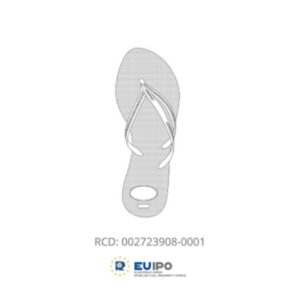
UK Trademark Requirements
A paper outlining the anticipated time frame for a UK trademark application, from filing to registration, was recently made available by the UK Intellectual Property Office (“UK IPO”).
Checking Eligibility for Trademark Registration
Additionally, they advise starting by “checking if you may register your trade mark.” Although it might seem straightforward, there are a few legal considerations to make. It’s crucial to complete this initial step correctly.
Representing Your Trade Mark Graphically
The first requirement is that your trade mark is regarded as a “sign” that can be “represented graphically.” There is no legal definition of what constitutes a “sign,” but the term has traditionally been construed broadly. Words, logos, symbols, 3D marks, colours, sounds, fragrances, and even the goods’ shapes can be used as signs.
In reality, it is more difficult to protect sound, smell, colour, and form marks than word or logo marks since these marks are frequently seen as characteristics of things that already exist rather than as distinctive signs, and they are also more challenging to “express graphically.”
Distinctiveness of the Trade Mark
Second, trade marks must be able to “distinguish” between the products and services of one business and those of another.
In short, trade marks lose their ability to distinguish if they are descriptive of the goods or services for which they are to be registered, if they are deemed to lack a distinctive character, or if they have become accepted in popular culture or legitimate, long-standing business operations.
Avoiding Similarities with Other Trademarks
You should stay away from the following if you want your mark to be seen as having the ability to distinguish:
- Simple signs, such as grammatical, single-letter, or number signs;
- Basic colour markings;
- Shapes that don’t considerably deviate from industry standards;
- Get-up and trade dress;
- Signatures and names;
- Slogans that are only promotional or descriptive;
- Marks that are often used in the industry or profession; and
- Marks that identify the type, quality, amount, intended use, cost, geographical origin, date of production, or other qualities of the goods or services.
However, suppose it can be demonstrated that a trade mark has “acquired distinction” through use. In that case, it may be feasible to establish that trade marks that are not intrinsically registrable because they lack distinctiveness or are descriptive are, in fact, registrable. In other words, the UK IPO may accept the mark provided it can be demonstrated that it now denotes the precise origin of a product.
Additionally, trade marks must not be similar enough to other marks for consumers to mistake them for one another. A mark will be more likely to cause consumer confusion if it is either similar to or identical to another mark and either:
- Utilised in connection with equal or similar products or services; or
- Is identical to another trade mark with a reputation in the UK but is not used in relation to comparable or identical products or services, and use of the later mark would unfairly exploit or harm the earlier mark’s distinctiveness.
Searching the UK IPO Trade Mark Registry
Searching the UK IPO trade mark registry will quickly reveal whether there are any other marks with a similar appearance in the UK IPO register. The mark you want to register should be looked up with respect to the same kinds of goods and/or services.
Objection Period Following Publication
The UK IPO will not deny an application because of comparable marks already being registered, but after investigation, they will give you a list of those marks. They might let the owners of those comparable marks know that your application has been published. Following publication, there will be a two-month objection period during which these owners may decide to dispute your mark.
Conclusion and Expert Support from The Trademark Room
Understanding some of the key requirements of a UK trade mark can help you protect your intellectual property rights. Firstly, the trade mark must be registered with the UK Intellectual Property Office. Secondly, the trade mark must be used in relation to the goods and services for which it is registered. Finally, the trade mark must be distinctive and not be similar to any other registered trade mark.
If you are looking for a company that specialises in company trade marks in the UK, look no further than our expertise here at The Trademark Room. We are a family-run business located in Southampton, England, and our clientele and recognition in the trade mark field span both national and international regions. Call us today, and let us handle all your company’s trade mark for you.











